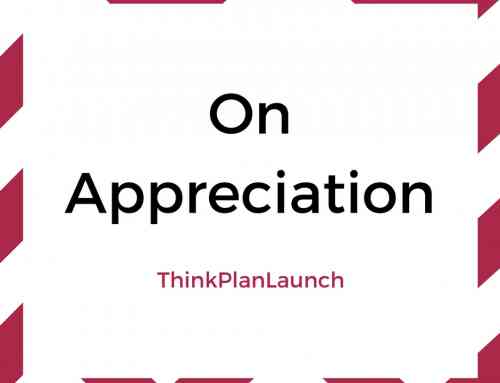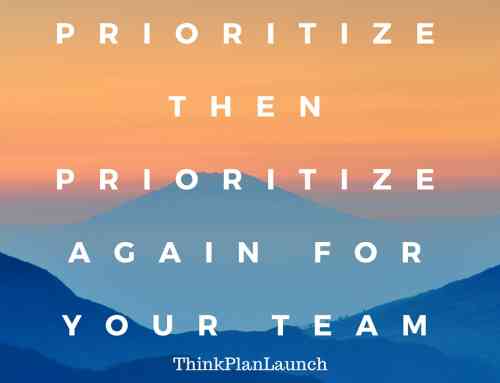Table of Contents
Intrinsic Motivation and Driving Forces
Intrinsic motivation is the primary internal force that causes a person to act. It’s at the core of a person’s thoughts, decisions, and actions. Understanding intrinsic motivation is critical to maximizing your own productivity. Furthermore, understanding the intrinsic motivation of others is crucial to motivating and leading people.
We used to refer to intrinsic motivation factors as “motivators” (and before that “values”). We now refer to intrinsic motivation factors as Driving Forces. The twelve Driving Forces provide a complete, accurate measure of a person’s intrinsic and extrinsic motivation.
When we understand a person’s Driving Forces, we understand WHY they do things. Whereas DISC measures a person’s behavioral style – helping us understand HOW they do things (communicate, interact, make decisions, organize their work, etc.) – Driving Forces goes deeper.
Driving Forces gives us the reasoning behind a person’s working style, career goals, and personal interests. It helps us understand why some people view others as illogical, and vice versa. It gives us a clear window into a person’s priorities, passions, and strengths.
In turn, this allows us to predict job fit and performance with a very high degree of accuracy. It also gives us the exact information needed to motivate someone for their reasons (not ours, which don’t matter to them). It catalyzes a higher level of collaboration and communication across teams. It gives us the ability to help other people the way they want to be helped.
Driving Forces has always been one of my favorite sciences for all of these reasons. It touches at the core of who we are as individuals, and sheds light on our unique dreams – many of which go back to childhood.
You will find people are always working to fulfill their top Driving Forces. If their work does not bring them this fulfillment, expect them to look for it outside of work – perhaps in a hobby, or extracurricular activity.
Additionally, people who are not fulfilling their core Driving Forces at work are at high risk for moving on, since their job is reduced to nothing more than a mere financial transaction – punching a clock and collecting a paycheck.
High Harmonious (High Aesthetic)
We may sometimes call the High Harmonious person a High Aesthetic. This is because the High Harmonious person is one who scores high on the Aesthetic scale.
Key Traits
The High Harmonious person is driven by balance, tranquility, and subjectivity. They are in it for the experience. Their productivity and personal happiness is directly affected by their environment – its appearance, the people around them, and the general feel or “vibe” of the room. They are in tune with others’ emotions and strive to find and create harmony in their lives.
Whereas the High Intellectual person needs to “think it through,” The High Harmonious person needs things to “feel right.” Furthermore, they want to be appreciated for what they bring to the table. They are passionate and creative people with an uncanny ability to read situations, see the big picture, and understand qualitative factors in business and relationships.
At Redline
When the High Harmonious person exhibits their Aesthetic nature at high levels, they may lose track of objective reality. The lens they view the world through may become so “real” to them that underlying truths escape them completely. For this reason, they may struggle with the realities of every day life and see things that aren’t there. They may come off to others as being “off in the clouds” or just plain unrealistic.
High Harmonious individuals are prone to losing track of the task at hand if they become overly absorbed in “the experience” of a situation. They may struggle to advance clear and necessary work objectives due to their disconnection from the objective world. However, this can be tempered by high emotional intelligence – namely cultivating high self-awareness.
Stress Factors
The High Harmonious individual will be stressed in an environment that stresses function over form. Furthermore, they will simply not be as productive in an environment that isn’t somewhat beautified and pleasing to the eye. Likewise, if the people around them are stressed or in a negative emotional state, so too the High Harmonious person will tend to “absorb” that energy – and it will directly affect their productivity and personal satisfaction. Remember, things have to feel right.
The High Harmonious person does not do well when there are significant disturbances in their environment. Disarrayed surroundings or general chaos are a recipe for disaster for the High Harmonious individual – these things will drag them down faster than you might realize. They will become very flustered in such an environment and begin to shut down emotionally, effectively paralyzing one of their greatest assets – their ability to see things that others can’t, to guide progress based on the whole of a situation, and to apply creative insight to projects.
Communication Insights
Form, harmony, experience. These are the big things that the High Harmonious person is looking for in life and work. Focus your communication on these things to draw out the best in them. Ask them how they feel, what they think, and why they feel/think that way. Help them reflect on the meaning of their experiences and give them opportunities to create balance in their work and lives.
When empowered in this way, the High Harmonious person will achieve incredible things with seemingly little effort. They can and will plan experiences to remember (parties, vacations, special events) and do a better job of it than anyone else on your team. They will create an environment where everyone can be more productive and less stressed. They will make memories with you that simply don’t exist with other people unlike them. In a nutshell, they understand the finer things in life and know how to bring you to a place of enjoying them.
Management Insights
When managing someone who is a High Harmonious, remember that you will not always understand their actions due to their subjective perceptions of the world around them. In fact, not even two High Harmonious individuals will share the same exact subjective views, making this a very interesting driving force indeed.
What may feel logical to the High Harmonious person could seem completely illogical or irrational to you – but you have to resist the urge to point this out, lest you turn them off and destroy their motivation. Instead, you must lean into their world a little bit and give them the opportunity to explain that world to you on their terms. Then you must demonstrate appreciation for that world, and seek to work within their subjective reality to achieve progress.
To drive a High Harmonious employee into action, you should give them opportunities to create and/or restore balance – in their physical environment, virtual environment(s), and in relationships with others. Explain how task completion will lead to greater form, harmony, and balance in all spheres of their life. Allow them to create and explore, and to adorn their work space as they’d like. And whatever you do – make sure they are not buried in a small, dark, interior cubicle. They will wilt just like a plant under those circumstances, yet will thrive when seated nearby a window or a more pleasant space (and yes, for you High Intellectuals / High Objectives out there – there is data behind this, odd as it may seem to you).
High Objective (Low Aesthetic)
We may sometimes call the High Objective person a Low Aesthetic. This is because the High Objective person is one who scores low on the Aesthetic scale.
Key Traits
The High Objective person is driven by functionality and objectivity, and is essentially the complete opposite of the High Harmonious. They do not have much appreciation for subjective viewpoints, which they will find irrational and besides the point – and unlike the High Harmonious person, they will actually thrive in chaotic situations. They can compartmentalize and stay focused on key work objectives, and will not be distracted or affected by environmental factors like the High Harmonious person.
Due to compartmentalized thinking patterns, the High Objective person is great at dissecting complex projects and developing functional systems. Because they sometimes fail to see “the whole,” though – instead seeing things in separate pieces or compartments, people may come to view the High Objective person as being “off in the clouds” (or more likely – out of touch with the world around them) just like the High Harmonious person. There is often much stress in working or personal relationships when two people exist at these opposite extremes – they simply will not understand why the other person does what they do, and the actions of the other person will appear to be counter-intuitive to them.
At Redline
Sometimes the High Objective individual will actually create chaos in their environment (intentionally) in their pursuit of so-called functionality. They may fail to see how their piece-wise thinking impacts others around them, especially those with High Harmonious driving forces. They may also “miss” the experience due to their immersion in a particular task, robbing them of valuable emotions and alienating the people around them.
This sheds light on one of the biggest blind spots the High Objective person has, which is an inability to understand the functionality and objectivity that exists within subjectivity and experience itself. They may be so caught in the tunnel of their own logically organized mind, that they fail to truly see the logical connection between the objective and subjective in life. They may not truly understand – in a functional and objective manner – how all the puzzle pieces of life connect on a larger level. Ironically, the High Objective person who has not had this realization may be sad to know they are not being objective and do not have a proper grip on certain functional elements of their lives.
Stress Factors
The High Objective person will cringe if appearances are prioritized over functionality. What’s the point of something looking good if it has no logical, objective purpose? It will seem superficial to them and they will dismiss such things summarily. Likewise, they will get quite upset if working for a leader or team who exhibits a “don’t rock the boat” attitude – which is basically an inhibition to progress in their mind.
When forced to work in an environment with many formalities, or where feelings are placed over logical decision-making, the High Objective person will shut down. They will come to see others who condone this mode of living as total clowns and begin to lose respect for them. Relationships will suffer and they may give up in their efforts to help, realizing consciously or unconsciously that their goals are largely different from the people around them.
Communication Insights
Great communication with a High Objective person will focus on facts, tasks, and objective realities. Nothing will bore them more than a prolonged discussion of opinions, guesses, and subjective viewpoints. Stay focused on one project, or one task, at a time with the High Objective person – and be sure you “tune in” to the critical elements they have identified as objectively relevant to the situation. Then be sure to formulate your discussion with them in terms of those functional elements.
Management Insights
The High Objective person wants to work in an objective environment, most likely with other team members who are also objective like them. This is not to say the High Objective person cannot work with a High Harmonious person, or people with other dominant intrinsic motivators, but they will tend to be more effective when working with people who “get it” like they do.
To that extent, leadership must understand and appreciate the High Objective members of their team and ensure others tailor their communication to this person accordingly. This will ensure the highest level of motivation, productivity, and collaboration – even when others do not share the exact same driving forces profile. The High Objective person will also appreciate assignments that allow them to solve problems and provide resolution to situations within chaos – they can be great go-to people when dealing with tough situations, or when you need a clear and objective analysis of the circumstances.
Conclusion
The High Harmonious / High Aesthetic person is basically subjective, striving for form and harmony in life. They want an experience to remember and will go out of their way to plan wonderful events, create beautiful homes and workplaces, and foster good feelings in friendships and relationships. Sometimes they get lost in their perceptions and may be seen as unrealistic, but they deserve appreciation for their unique ability to find balance.
On the other hand, the High Objective / Low Aesthetic person is a fact-based functionality powerhouse. Less concerned with mushy things like feelings and environmental beauty, they are in the game to get to the bottom of things. They can work well in chaos and compartmentalize situations in multiple areas of their lives. Even if they don’t always see the big picture, they can help anchor the people around them to reality and catalyze real progress as a result.
Both the High Harmonious and High Objective individuals are great additions to any team. In fact, every mid-to-large sized team ought to have at least one of each. The High Harmonious person will tend to keep stress levels down, bring good mojo to the group, come up with creative ideas, and see things in terms of the big picture. They may identify things that others overlook or miss – important, functional elements as they would be, which are important to long-term success.
Meanwhile, the High Objective person will keep people grounded in reality and take a logical approach to structuring workload, teamwork, and project completion. They will be undeterred when the road gets rocky and inspire confidence in their team during times of challenge. They will be there to answer difficult questions with accuracy when others struggle to see the objective realities around them.
Depending on the specific job role, though, you must understand which style will perform better and incorporate that information into your hiring decision. Furthermore, managers and employees alike will benefit from understanding each others’ drivers and speaking to them – rather than speaking to their own.




Leave A Comment